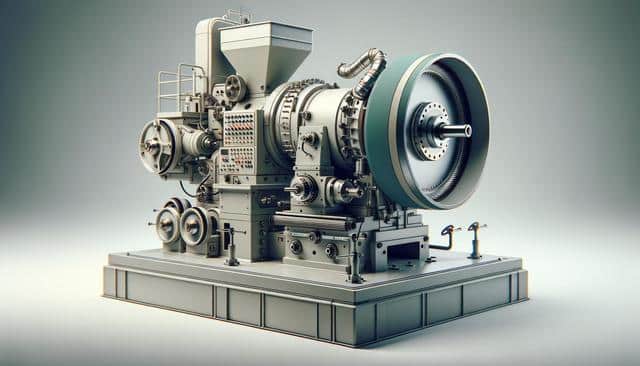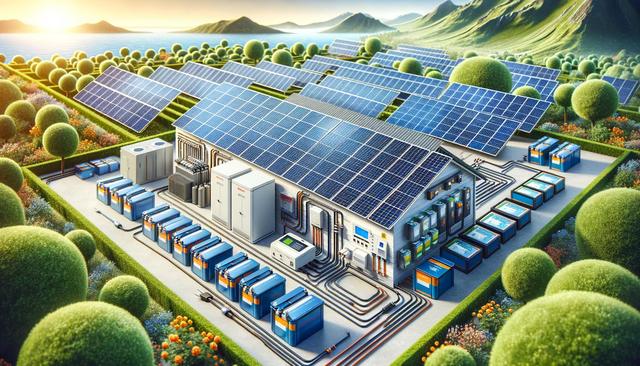
Batteries for Renewables: Compatibility, Lifespan & Market Outlook
Understanding Compatibility Between Batteries and Renewable Energy Sources
Integrating batteries with renewable energy systems requires a deep understanding of compatibility. Solar photovoltaic (PV) panels and wind turbines generate electricity intermittently, which makes energy storage essential for balancing supply and demand. Not all batteries are equally suited to every renewable setup, so choosing the right technology is critical. Compatibility depends on factors such as voltage requirements, charging cycles, and system architecture.
For instance, lithium-ion batteries are widely used due to their high energy density and fast charging capabilities, making them a practical choice for residential solar systems. On the other hand, flow batteries, which use liquid electrolytes, can be more appropriate for large-scale wind farms because of their scalability and long-duration storage potential. Key compatibility considerations include:
- Charge/discharge rate matching with generation patterns
- Temperature operating range suitable for local climate
- System voltage alignment for seamless integration
Proper compatibility ensures not only performance efficiency but also long-term reliability and safety. As renewable installations continue to expand, ensuring battery technologies align with specific system demands becomes increasingly important.
Lifespan and Degradation Patterns of Battery Technologies
Battery lifespan is a crucial factor influencing the economics and sustainability of renewable energy systems. Each battery chemistry degrades differently over time, and understanding this degradation helps in planning maintenance, replacements, and budgeting over the system’s lifetime.
Lithium-ion batteries typically offer between 5 to 15 years of useful life, depending on usage patterns and environmental conditions. They experience capacity fade due to electrode wear and electrolyte breakdown. In contrast, lead-acid batteries, although cheaper upfront, tend to have shorter lifespans—often under 5 years with regular deep cycling. Flow batteries distinguish themselves with a potentially longer cycle life, as their energy storage material is stored externally and can be replaced or refreshed more easily.
Factors affecting battery lifespan include:
- Depth of discharge (DoD): Frequent deep discharges reduce longevity
- Ambient temperature: High heat accelerates degradation
- Cycle frequency: More frequent cycling leads to faster wear
Proper management systems, such as battery management systems (BMS), can extend battery life by monitoring health, regulating charge/discharge cycles, and preventing thermal runaway. A well-maintained battery not only lasts longer but also performs more reliably throughout its service cycle.
Recent Trends in the Energy Storage Market
The global energy storage market is experiencing rapid evolution, driven by falling battery costs, supportive policies, and a surge in renewable energy deployments. As of recent years, lithium-ion technologies dominate market share, but alternative chemistries are gaining traction, especially for grid-scale applications seeking longer-duration storage.
Investments in battery R&D are leading to innovations such as solid-state batteries, which promise higher safety and density, and sodium-ion batteries, which offer a more abundant and potentially less expensive alternative to lithium. Meanwhile, governments and utilities are increasingly incorporating storage into their energy planning to enhance grid resilience and meet decarbonization targets.
Key market developments include:
- Expansion of battery manufacturing capacity globally
- Introduction of time-of-use pricing models encouraging storage adoption
- Growth in second-life battery use from electric vehicle applications
These trends signal a shift toward more flexible and decentralized energy systems, where batteries play a central role in enabling consistent renewable power delivery regardless of generation variability.
Challenges and Opportunities in Battery Integration
While the benefits of battery integration with renewables are clear, several challenges remain, particularly in terms of cost, scalability, and infrastructure readiness. Upfront capital costs can be a barrier for both residential and commercial users, especially when storage is bundled with new renewable installations. Additionally, integrating storage into existing grid infrastructure requires updates to grid management systems and regulatory frameworks.
Despite these hurdles, the transition also presents numerous opportunities. Energy storage enables greater penetration of renewables by mitigating curtailment and enhancing energy reliability. In remote or off-grid areas, batteries paired with renewables can provide consistent power without reliance on diesel or other fossil fuels. Moreover, as energy markets evolve, storage assets can participate in ancillary services, frequency regulation, and demand response programs, creating new revenue streams for system owners.
To seize these opportunities, stakeholders must focus on:
- Developing clearer interconnection standards
- Offering financial incentives for storage investment
- Fostering public-private collaborations to scale deployment
By addressing integration challenges holistically, the renewable energy sector can unlock the full potential of battery storage and support a more resilient and sustainable energy future.
Future Outlook: What Lies Ahead for Batteries in Renewables?
The outlook for batteries in the renewable energy sector is promising, with continued innovation and market growth expected over the next decade. As technological advancements improve energy density, safety, and charging times, batteries will become even more integral to meeting global clean energy goals. The development of hybrid systems combining multiple storage technologies may further enhance flexibility and resilience.
Regulatory support will be key in shaping the future market landscape. Policies promoting storage deployment, such as tax incentives and grid modernization initiatives, will likely influence investment decisions. Additionally, the rise of distributed energy storage—where consumers generate and store their own power—will contribute to a more democratized energy system.
Emerging trends to watch include:
- Integration of AI and machine learning for predictive battery management
- Growth of peer-to-peer energy trading platforms with storage support
- Expansion of virtual power plants aggregating multiple storage assets
As the industry matures, the role of batteries will extend beyond simple storage to becoming active participants in energy markets and grid services. The convergence of technology, policy, and consumer demand will shape a dynamic future where storage is a cornerstone of renewable energy systems.
Conclusion: Making Informed Choices for a Sustainable Energy Future
For individuals, businesses, and policymakers exploring battery options for renewable energy, understanding compatibility, lifespan, and market dynamics is essential. Tailoring battery selection to specific energy systems ensures better performance, cost-effectiveness, and longevity. While challenges remain, the ongoing advancements in battery technology and supportive policy frameworks point toward a future where energy storage is both accessible and impactful.
By staying informed about evolving battery technologies and market trends, stakeholders can make strategic decisions that contribute to a resilient, low-carbon energy landscape. Whether for residential solar, commercial microgrids, or utility-scale wind, batteries will continue to play a pivotal role in integrating renewables and stabilizing power delivery across the globe.


